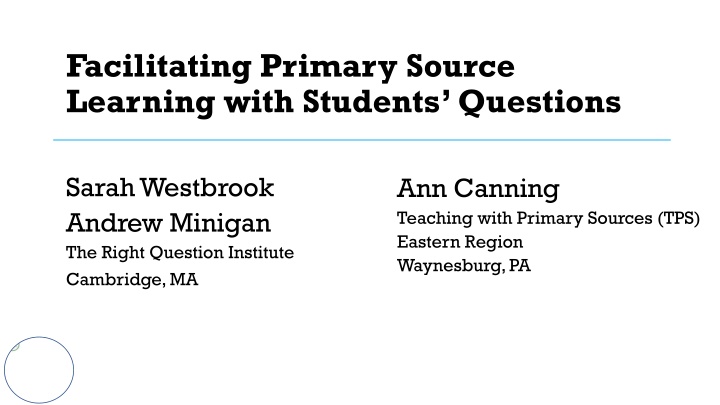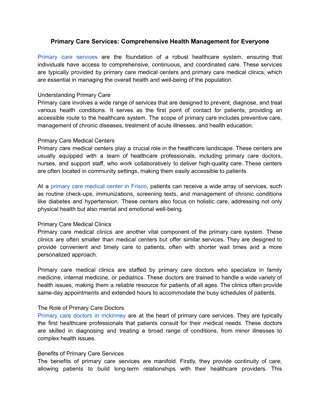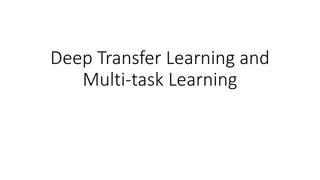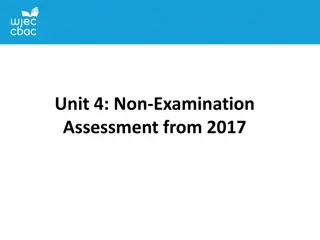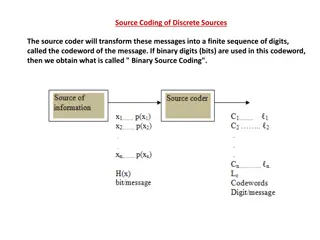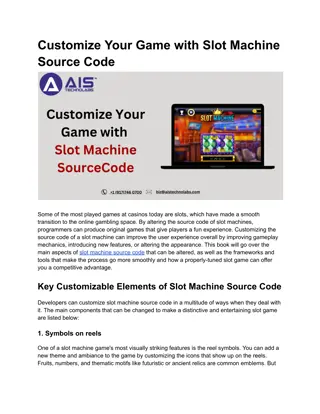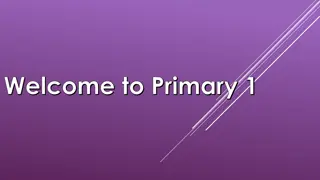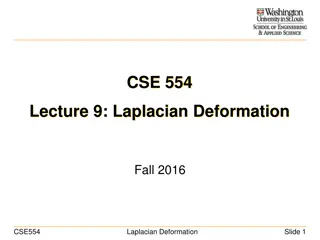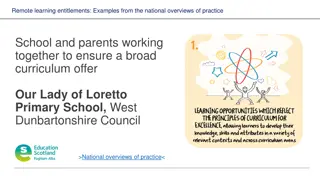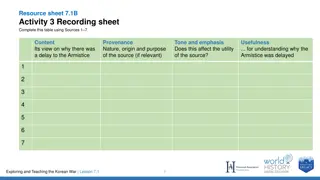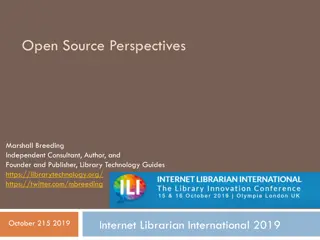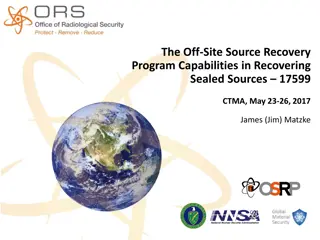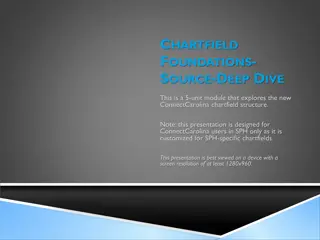Primary Source Learning Strategies
Delve into effective methods for facilitating primary source learning with students through engaging activities and insightful discussions. Discover valuable resources and gain practical knowledge to enhance teaching practices.
Download Presentation

Please find below an Image/Link to download the presentation.
The content on the website is provided AS IS for your information and personal use only. It may not be sold, licensed, or shared on other websites without obtaining consent from the author.If you encounter any issues during the download, it is possible that the publisher has removed the file from their server.
You are allowed to download the files provided on this website for personal or commercial use, subject to the condition that they are used lawfully. All files are the property of their respective owners.
The content on the website is provided AS IS for your information and personal use only. It may not be sold, licensed, or shared on other websites without obtaining consent from the author.
E N D
Presentation Transcript
Facilitating Primary Source Learning with Students Questions Sarah Westbrook Andrew Minigan The Right Question Institute Cambridge, MA Ann Canning Teaching with Primary Sources (TPS) Eastern Region Waynesburg, PA
NCHE Conference Sponsors NCHE Conference Sponsors
NCHE Door Prizes NCHE Door Prizes One Door Prize Ticket for Every Session Evaluation Completed! Door Prizes Include: Registration, Flight and Hotel for the 2021 NCHE Conference, Ancestry DNA Kit, Kindle Fire, Assorted Books and Gift Baskets, Memberships to World Explorer, Fold3.com, Newspapers.com and Sutori, Other Exciting Items! Winners will be picked each day and notified after the conference. Good Luck!!
Humanities in Class Education Programs build Humanities in Class Education Programs build bridges between the scholarly world and the bridges between the scholarly world and the working classroom, addressing both classic working classroom, addressing both classic and contemporary aspects of the humanities. and contemporary aspects of the humanities. Spring Online Courses start May 26 Beyond February: Hip Hop and the African American Experience Summer Institute registration now open Humanities in Class Digital Library Humanities in Class Digital Library launches in early June, featuring OER content and instructional resources from over thirty humanities organizations, including NCHE. www.nationalhumanitiescenter.org www.nationalhumanitiescenter.org
Facilitating Primary Source Learning with Students Questions Sarah Westbrook Andrew Minigan The Right Question Institute Cambridge, MA Ann Canning Teaching with Primary Sources (TPS) Eastern Region Waynesburg, PA Access today s materials at https://rightquestion.org/events/ rightquestion.org
There are 2 icons you will see in this session: This means that you should be thinking or working on the task assigned This means get ready to use your chat box to share some of your work
Todays Agenda 1) Why Spend Time on Teaching the Skill of Question Formulation? 2) Collaborative Learning with the Question Formulation Technique (QFT) 3) Explore Real Classroom Examples & Applications 4) Why is Question Formulation Important Now? 5) Q&A
Were Tweeting @RightQuestion @SarahRQI @AndrewRQI #QFT
Access Todays Materials and All of Our Free Resources https://rightquestion.org/events/ Classroom Examples Instructional Videos Planning Tools & Templates
Use and Share These Resources The Right Question Institute offers materials through a Creative Commons License. You are welcome to use, adapt, and share our materials for noncommercial use, as long as you include the following reference: Source: The Right Question Institute (RQI). The Question Formulation Technique (QFT) was created by RQI. Visit rightquestion.org for more information and free resources.
+ Why spend time teaching the skill of question formulation?
Honoring the Original Source: Parents in Lawrence, Massachusetts, 1990 We don t go to the school because we don t even know what to ask.
"There is no learning without having to pose a question." - Richard Feynman Nobel Laureate, Physics, 1965
We must teach students how to think in questions, how to manage ignorance. Stuart Firestein Former chair, Department of Biology, Columbia University
College Presidents on What College Students Should Learn The primary skills should be analytical skills of interpretation and inquiry. In other words, know how to frame a question. - Leon Botstein, President of Bard College the best we can do for students is have them ask the right questions. - Nancy Cantor, Former Chancellor of University of Illinois The New York Times, August 4, 2002
Yet, Only 27% of Graduates Believe College Taught Them How to Ask Their Own Questions Alison Head, Project Information Literacy at University of Washington, 2016
Question Asking Declines with Age Tizard, B., Hughes, M., Carmichael, H., & Pinkerton, G. (1983). Dillon, J. T. (1988).
Question Asking in School Who s asking questions over the course of an hour? Educators Students Dillon, 1988, p. 199
We can work together on changing these dynamics
We Are Not Alone More than 1 million classrooms worldwide
What happens when students do learn to ask their own questions?
Research Confirms the Importance of Questioning Self-questioning (metacognitive strategy): Student formulation of their own questions is one of the most effective metacognitive strategies Engaging in pre-lesson self-questioning improved students rate of learning by nearly 50% (Hattie, p.193) John Hattie Visible Learning: A Synthesis of Over 800 meta-Analyses Relating to Achievement, 2008
Student Reflection The way it made me feel was smart because I was asking good questions and giving good answers. -Boston 9th grade summer school student
+ Collaborative Primary Source Learning with the Question Formulation Technique (QFT)
The Question Formulation Technique (QFT) Individuals learn to: Produce their own questions Improve their questions Strategize on how to use their questions Reflect on what they have learned and how they learned it
Rules for Producing Questions 1. Ask as many questions as you can 2. Do not stop to answer, judge, or discuss 3. Write down every question exactly as stated 4. Change any statements into questions
Produce Questions 1. Ask Questions 2. Follow the Rules Ask as many questions as you can. Do not stop to answer, judge, or discuss. Write down every question exactly as it was stated. Change any statements into questions. 3. Number the Questions
Question Focus Take 1 minute to silently observe the image. Now, ask questions. Number the questions. Follow the rules. A store owned by the Matsuda family in Oakland, CA, March, 1942 Retrieved from: https://www.loc.gov/pictures/item/2004665381/
Categorize Questions: Closed/Open Definitions: Closed-ended questions can be answered with a yes or no or with a one-word answer. Open-ended questions require more explanation. Directions: Identify your questions as closed-ended or open-ended by marking them with a C or an O.
Discuss Closed-ended Questions Advantages Disadvantages
Discuss Open-ended Questions Advantages Disadvantages
Improve Questions Take one closed-ended question and change itinto an open- ended question. Closed Open Take one open-ended question and change itinto a closed- ended question. Open Closed
Prioritize Questions Review your list of questions Choose three questions that you are most curious to discuss and think about further. While prioritizing, think about your Question Focus, the image of the storefront. Then, think about why you chose those questions. After prioritizing, use the chat box to share ONE of your priority questions.
Action Plan Moving from priority questions into action steps. In order to answer your priority questions: What do you need to know? Information What do you need to do? Tasks Write down a couple ideas you have.
Share Using the Chat Box, please share: 1. One idea you had from your action plan - and - 2. The numbers of your three priority questions in your original sequence (For ex: 2, 4, 7 out of 8 total )
Reflect What did you learn? How did you learn it? After reflecting, use the chat box to share your response to ONE of the questions above.
Possible Extensions with Library of Congress Resources (thanks, Ann!) https://blogs.loc.gov/picturethis/2015/02/day-of-remembrance- photographs-of-japanese-american-internment-during-world-war-ii/ blog post that links resources throughout Library collections http://www.loc.gov/teachers/classroommaterials/primarysourcese ts/internment/ A primary source set on Japanese American internment with detailed teacher s guide https://www.loc.gov/collections/ansel-adams-manzanar/about-this- collection/ The full Ansel Adams collection of photographs taken at Manzanar relocation center https://www.loc.gov/teachers/classroommaterials/presentationsan dactivities/presentations/immigration/japanese3.html http://www.loc.gov/teachers/classroommaterials/primarysourcese ts/veterans/struggles.html Women Come To the Front - Dorothea Lange: https://www.loc.gov/exhibits/wcf/wcf0013.html Japanese-American Internment Camp Newspapers, 1942 to 1946: https://www.loc.gov/collections/japanese-american-internment- camp-newspapers/about-this-collection/
The QFT, on one slide 1. Ask as many questions as you can 2. Do not stop to discuss, judge or answer 3. Record exactly as stated 4. Change statements into questions 1) Question Focus 2) Produce Your Questions Follow the rules Number your questions 3) Improve Your Questions Categorize questions as Closed or Open-ended Change questions from one type to another 4) Strategize Prioritize your questions Action plan or discuss next steps Share 5) Reflect Closed-Ended: Answered with yes, no or one word Open-Ended: Require longer explanation Source: The Right Question Institute rightquestion.org
Three thinking abilities with one process
Thinking in many different directions Divergent Thinking
Narrowing Down, Focusing Convergent Thinking
Thinking about Thinking Metacognition
+ Exploring Classroom Examples
Classroom Example: High School Teacher: Kelly Grotrian, East Brunswick, NJ Topic: 11th Grade U.S. History Purpose: To conclude a unit on World War II and lead into an informed debate about US use of atomic weapons
Question Focus http://www.loc.gov/pictures/item/98506956/
Student Questions 1. What is this? 2. Who did this? 3. How did this affect people? 4. What were the environmental & economic implications of dropping the bomb? 5. How many people were hurt? 6. Is that a plane wing in the bottom right? 7. Did the people in that plane drop the bomb? 8. Did the people dropping the bomb know what they were doing? 9. Did they make the bomb? 10.Who was responsible for dropping the bomb? 11.What led to this event? 12.What happened as a result of dropping the bomb? 13.Where was the bomb dropped? 14.Had people been given warning? 15.How long did it take to notice effects of the bomb? 16.When did this happen (at what point in the war)? 17.How many lives were lost as a result?
Next Steps: Students chose priority questions to respond to in a homework assignment that night Homework and subsequent lessons lead into a debate about whether the United States was justified in dropping the atomic bomb
